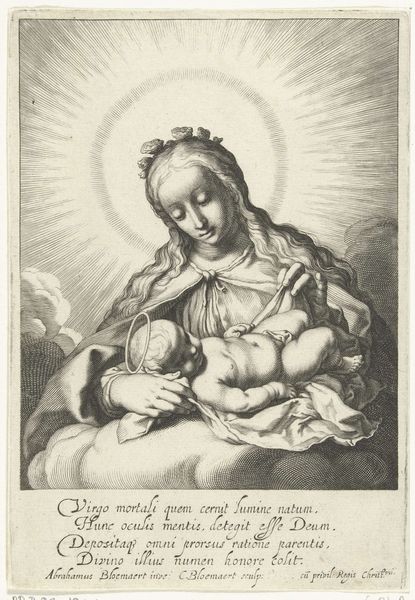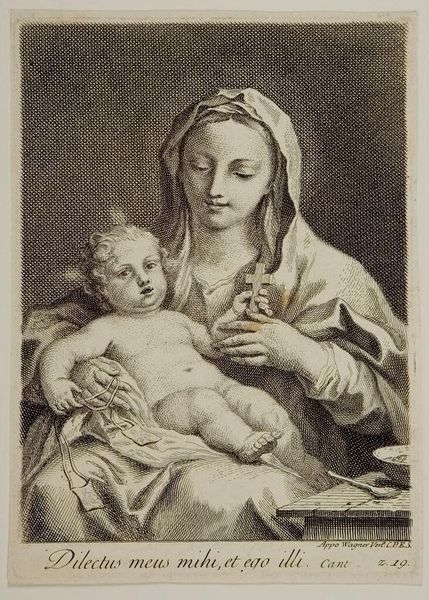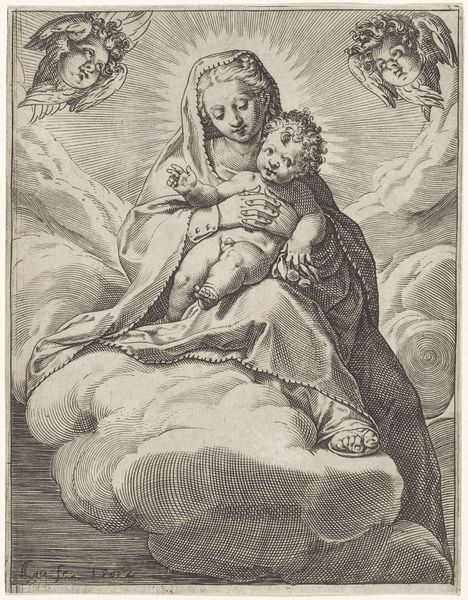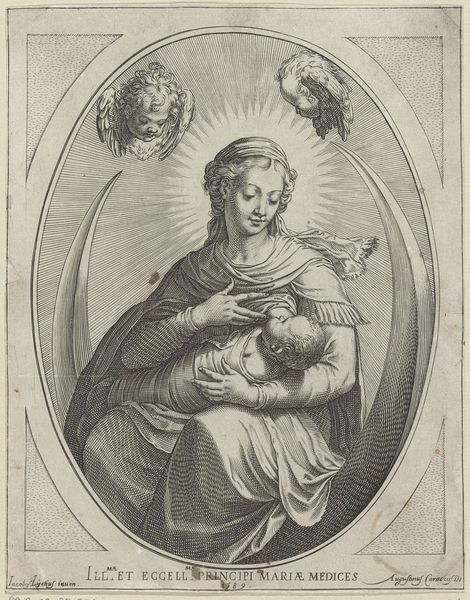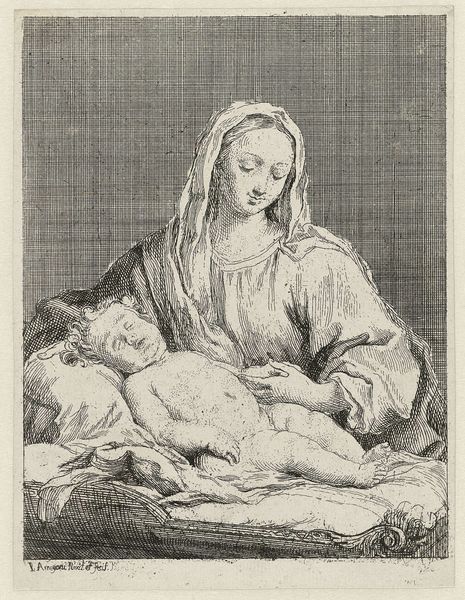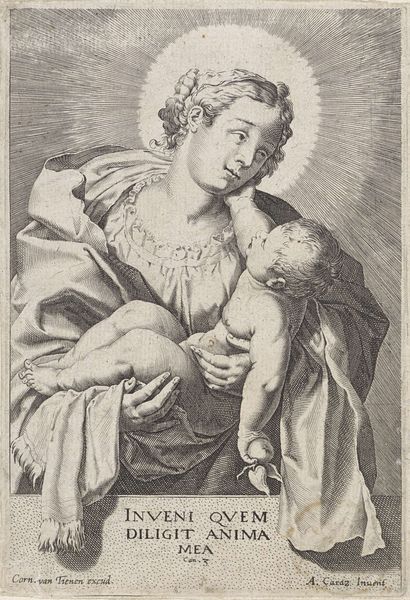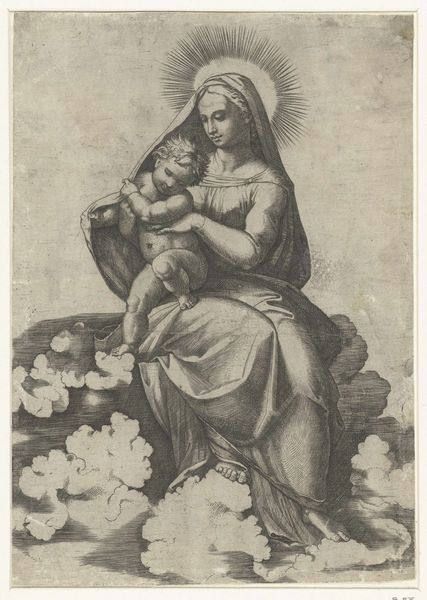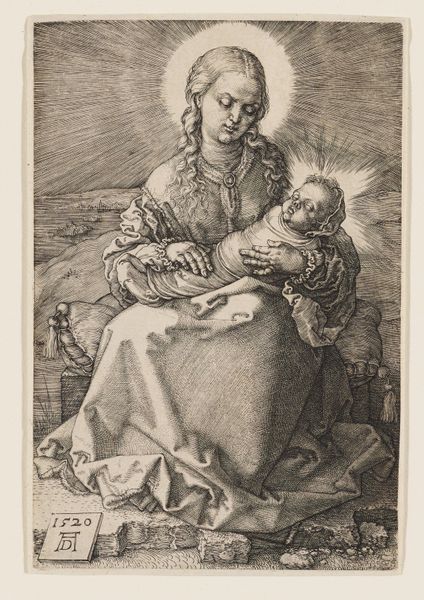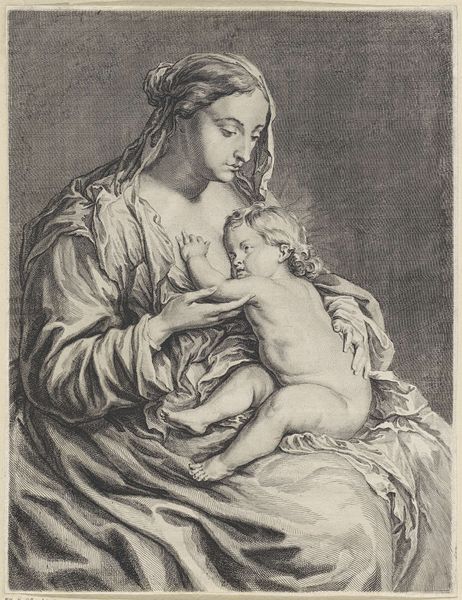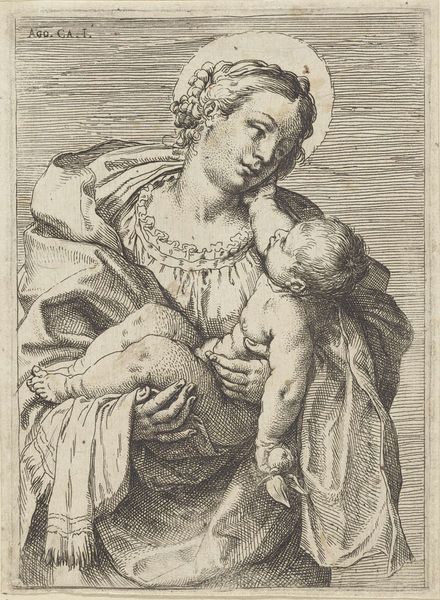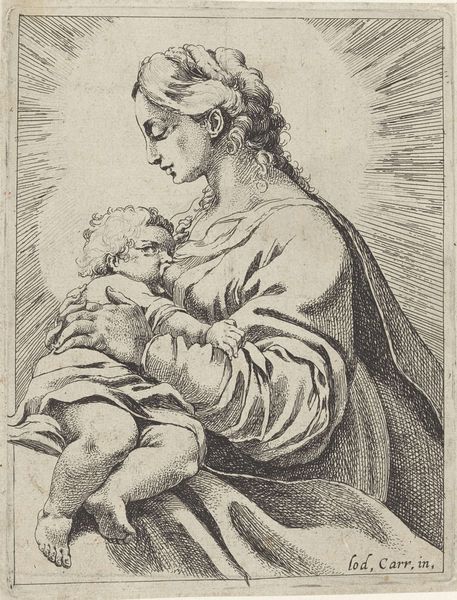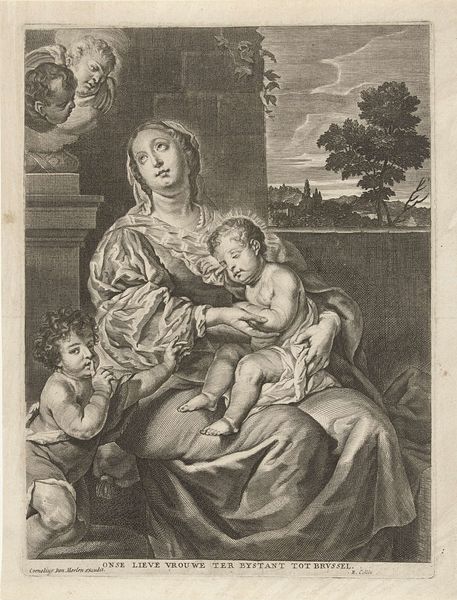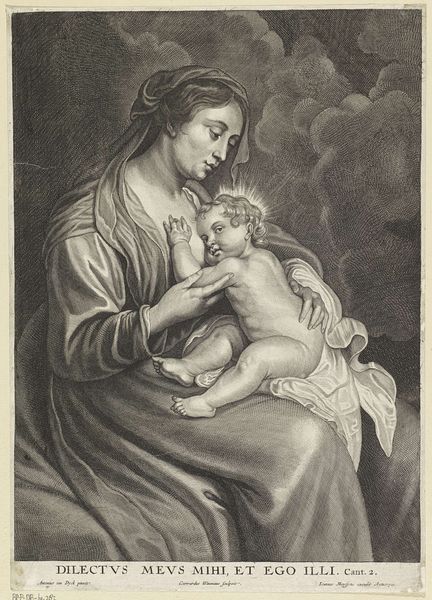
print, engraving
#
portrait
# print
#
old engraving style
#
mannerism
#
figuration
#
line
#
portrait drawing
#
italian-renaissance
#
engraving
Dimensions: height 156 mm, width 107 mm
Copyright: Rijks Museum: Open Domain
Editor: This engraving, "Maria aanbidt het slapende Christuskind" from around 1595-1600 by Johann Sadeler I, has a really tender feel. There's such a sense of quiet devotion. How do you interpret this work within its historical context? Curator: I see this work as a powerful statement on the construction of ideal womanhood within a patriarchal religious framework. Consider the figure of Mary, idealized and serene, embodying the virtues of piety and motherhood. How does this image reinforce societal expectations of women in the late 16th century? Editor: I guess the way she's presented definitely reflects the ideal of women back then, all demure and motherly. Do you think it also speaks to issues of power, maybe subtly? Curator: Absolutely. While seemingly passive, Mary’s central position and the focus on her maternal role grants her a certain symbolic power. Her worship of the child Christ reinforces the importance of motherhood, but it simultaneously confines her identity within the domestic sphere. How might this resonate with contemporary debates on gender and representation? Editor: So, while it appears to be just a devotional image, it's actually reflecting and reinforcing these social and gendered dynamics of the time? Curator: Precisely. The radiant light, framing Mary's face, signifies divine favor, but it also sets her apart, creating a distance between the ideal and lived realities. How might a contemporary feminist critique interpret the inscription and the overall composition in terms of female agency and representation? Editor: Wow, I hadn't considered the limitations being imposed along with the admiration. It really changes how I see it. Curator: Understanding these nuanced layers, how art both reflects and shapes social norms, provides a richer, more critical understanding of art history and its relationship to the present.
Comments
No comments
Be the first to comment and join the conversation on the ultimate creative platform.
